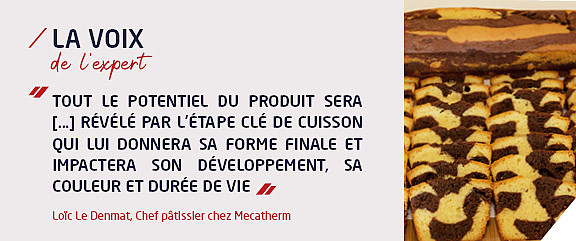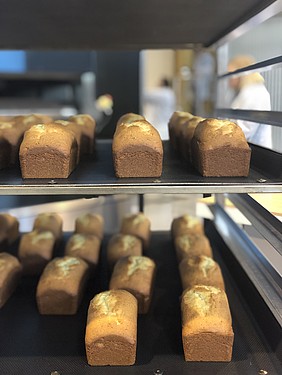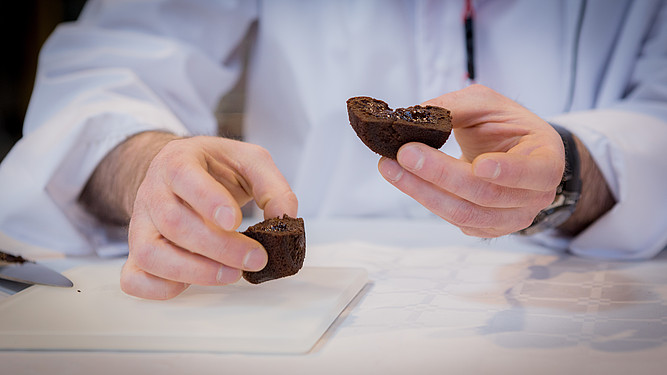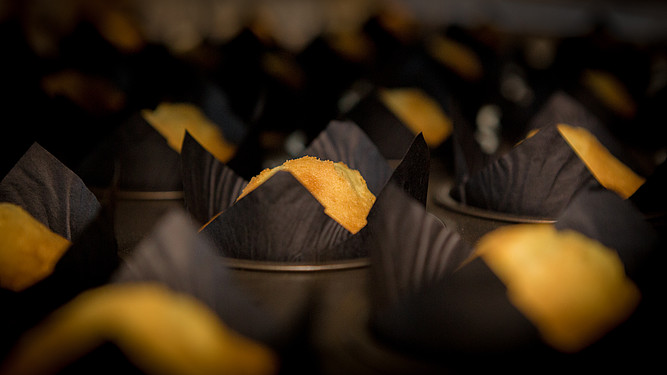Industrial patisserie: a close look at the worldwide market
A vast and dynamic market
With a yearly consumption of 11 million tonnes1 of patisserie products around the world, the industrial patisserie market is a prosperous one.
The overall trend for product diversity is a growing and worldwide trend and is one which can be seen in the patisserie market in particular. Creating loyalty with customers is a real challenge for brands which sit side by side on shelves which are full to bursting, serving a volatile customer base.
Not only are curious and demanding customers looking for a taste experiencewith every product they consume, they want more still. They are paying closer and closer attention to the nutritional dimension of products and their effects on their health.
Professionals who want to preserve and develop their market share must rise to the challenge of high quality and agile industrial patisserie production.
Towards more practical, health and innovative products and practices
Today’s typical consumer is mobile, urban and eats on the go. Patisserie products like cakes are taken away from a traditional menu to be eaten outside meals.
In this context, individual portions are very popular because of their practical and easily-transportable nature: each year, 4 out of 10 patisserie products[1] are sold wrapped and 44%[2] of them are eaten during the afternoon.
Although spending less time on eating their meals, consumers are paying close attention to their health and well-being. Trends for "healthy" gluten-free, vegan or organic diets are encouraging industrial companies to adapt their recipes. “We are seeing an increase in demand for healthier products and special gluten-free, sugar-free or lactose-free products", confirms Bassam Seif, CEO of Moulin d’Or[3].
Natural ingredients such as cereals, dried fruit or oils are now part of new recipes.
Consumers want to combine health and pleasure. They are seeking a unique taste experience which calls on all of their 5 senses, something which industrial bakeries such as La Lorraine Bakery Group have fully understood: “For us, the combination of the taste and appearance of the product is very important; this is what we call “product leadership” .” Yves Deprez, R&D and NPD specialist[4].
Regional specialities, such as brownies, industrial macarons, pasteis de nata and other traditional pastries are exported worldwide and are opening up new horizons for consumers, who want to discover new flavours and textures.
Classical recipes are being reinvented: filled madeleines, hybrid cakes such as duffins (a mix between a muffin and a donut) or brookies (a mix between a brownie and a cookie) are surprising and seducing consumers who are looking for new products.
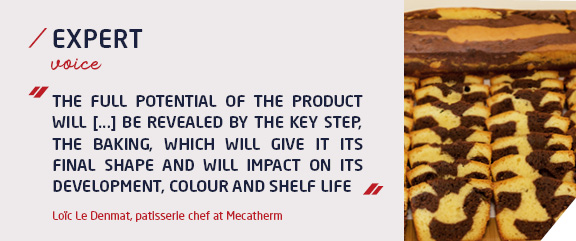
How can the market's challenges be met?
Industrial bakers are rising to a new challenge to respond to this diversification in demand by developing an offer which combines innovation, nutritional balance and a treat for all 5 senses.
This is vital if they are to stand out from the competition in a dynamic market which sees over 8000[5] new products launched each year around the world: 81%[6] for long shelf life, 11% for fresh and 8% for frozen.
To meet this challenge,production line flexibility is essentialas a source of competitiveness. Initially, this is because the demand is imposing the manufacture of numerous varieties of pastry, then the customisation steps (filling, decoration, cutting, etc.) enable industrial manufacturers to expand their ranges.
Flexibility also means quality, an essential challenge which is determined by several key steps in production, explains Loïc Le Denmat, patisserie chef at Mecatherm: “Patisserie product quality starts with ingredient selection and how we handle them during mixing and dosing. The full potential of the product will then be revealed by the key step, the baking, which will give it its final shape and will impact on its development, colour and shelf life".
Baking control and precision guarantee that the characteristics of the patisserie product will be respected, which will make it stand out and unique. Baking precision must not only guarantee product quality, it should also help optimise industrial performance. One particularly important point for attention in this market where products have high added value: the patisserie products only represent 6% of the global bakery market but they represent 22% of its value[4].
Ensuring optimum quality for each product while controlling its industrial performance requires a great deal of agility. High added value ingredients, such as the fats, sugars or egg products used in patisserie production mean that the stakes are even higher. Mecatherm takes all of these elements into account to design solutions which are adapted to new market demands in terms of quality, flexibility and industrial performance.
Discover our dedicated patisserie production solutions.
[1] Source: Euromonitor, Market 2018 in volume
[2] Source: Puratos
[3] Patisserie Seminar 2019 – Mecatherm Barembach
[4] Patisserie Seminar 2019 – Mecatherm Barembach
[5] Source: Euromonitor, 2019 (patisserie brochure)
[6] Source: Mintel, 2018

